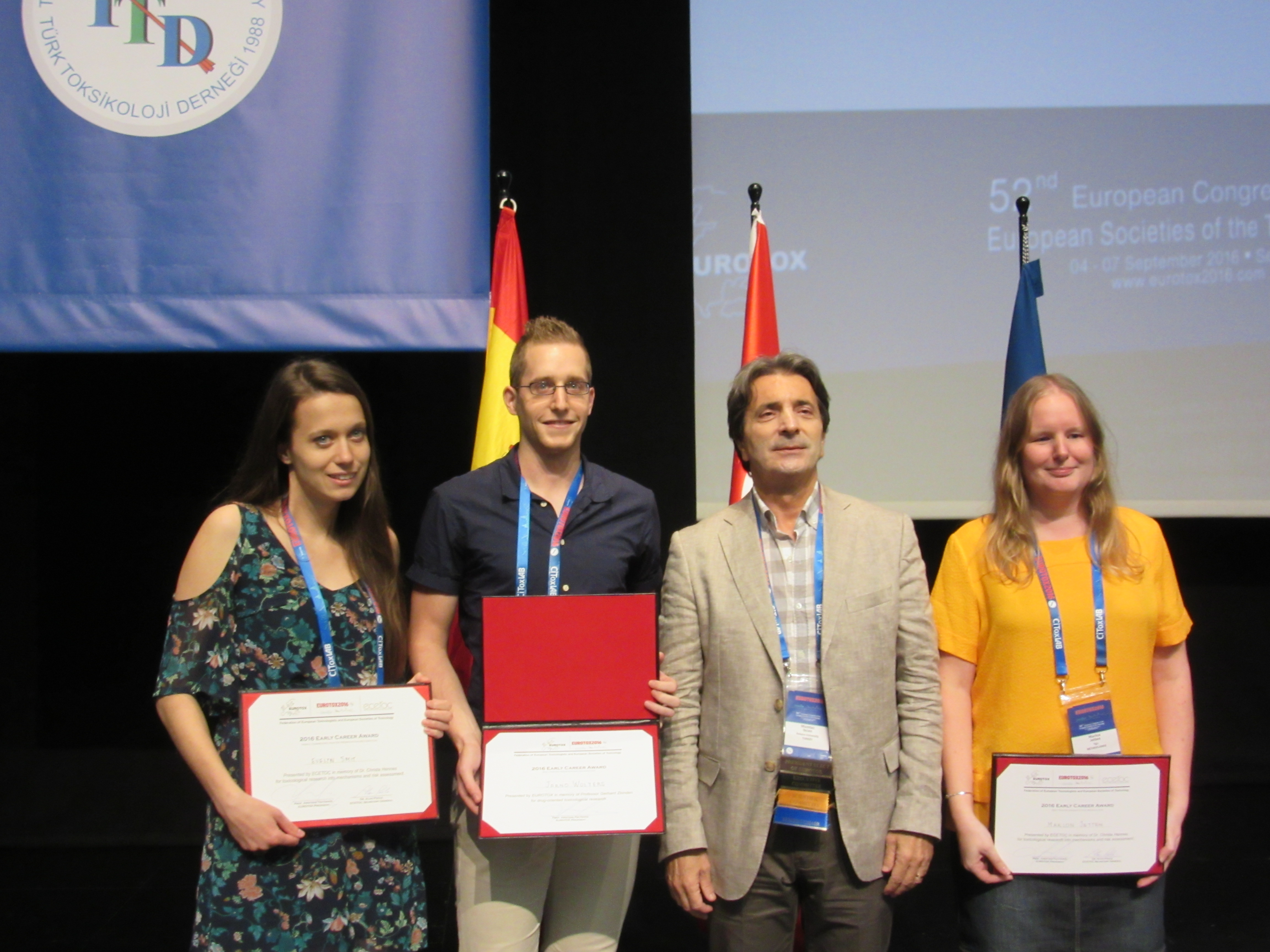EUROTOX 2016 Poster awards
During the 52nd EUROTOX congress in Sevilla (Spain), three of the four encouragement prizes went to FHML PhD students/PostDocs (Department Toxicogenomics). They won the award for their poster. Circa 800 posters were presented during the congress.
EUROTOX is the Federation of 34 European National Societies of Toxicology with more than 7.000 members. The theme of the 52nd congress was Protecting Public and Environmental Health by Understanding and Communicating Toxicology and the scientific programme highlighted significant developments and achievements in the field of toxicology.
According to Jarno Wolters, the fact that they won so many prizes can be contributed to the extremely innovatory character of Maastricht research, such as the in Maastricht applied method of sequencing. "With sequencing you can unravel DNA to the smallest building blocks: 'basen'. On the basis of the sequence of these 'basen', you can see if a gene is more active or less active and the risk of a deviation or disease is bigger or smaller.
Dr. Marlon Jetten won the ECETOC Christa Hennes Early Career Award (ECA) for toxicological research into mechanisms and risk assessment (EUR 2,000) for her poster Development of short-term assay(s) to predict dermal cancer potential of petroleum streams.
“The standard methods used to determine the carcinogenic potential of petroleum streams (PS) have cost/time constraints. Previously, we applied a toxicogenomics approach to a short-term in vivo dermal mouse model and demonstrated the feasibility of reliably predicting carcinogenic properties of PS. Here, we aim to follow-up on this and develop an in vitro approach for the same purpose by investigating cancer-specific genes/pathways in 2D/3D in vitro human skin cell models (HaCaT (2D) and Phenion (3D)). Based on the results it appears to be challenging to develop such predictive short-term test using transcriptomics with a limited number of test PS, suggesting that further validation with a broader range of substances may minimize uncertainty of this predictive approach.”
Jarno Wolters, MSc won the EUROTOX Gerhard-Zbinden Early Career Award (ECA) for drug-oriented toxicological research (EUR 2,000) for his poster Valproic acid-induced epigenetic changes in the nuclear and mitochondrial DNA of primary human hepatocytes.
“Valproic acid is one of the most widely prescribed antiepileptic drugs in the world. Despite its pharmacological importance, it may cause liver toxicity and steatosis through mitochondrial dysfunctioning. The aim of this study is to investigate VPA-induced changes in patterns of methylation in nuclear DNA (nDNA) and mitochondrial DNA (mtDNA), and to relate this to mechanisms of steatosis. Therefore, primary human hepatocytes were used. We suggest the occurrence of a crosstalk between the nDNA hypermethylation and the mtDNA hypomethylation during VPA-exposure, leading to hypomethylation of specific mitochondrial genes which play a role in steatosis development and oxidative stress.”
Evelyn Smit, MSc was highly recommended in the EUROTOX ECETOC Christa Hennes Early Career Award (ECA) category for her poster Identification of essential transcription factor networks during genotoxic stress response using functional genomics.
“Humans are frequently exposed to environmental carcinogens like polycyclic aromatic hydrocarbons. Our cells cope with these carcinogenic substances by activating various stress response pathways. The mechanisms that underlie this cellular response are partly driven by changes in gene expression. Here we aimed to identify key transcription factors (TF) controlling the transcriptional response after exposure to benzo[a]pyrene (BaP) and aflatoxin B1 (AFB1) by knocking down BaP and/or AFB1 activated TFs. We identified activated or repressed TFs after BaP and AFB1 exposure using publically available gene expression data. The preliminary data suggest that the identified TFs are important regulators of the DNA damage response after BaP and AFB1 exposure. Future experiments focus on unraveling the mechanistic basis for the observed DNA damage prevention.”
